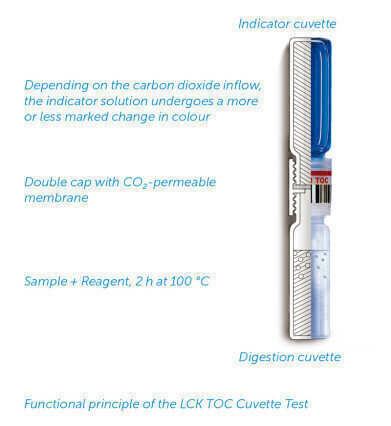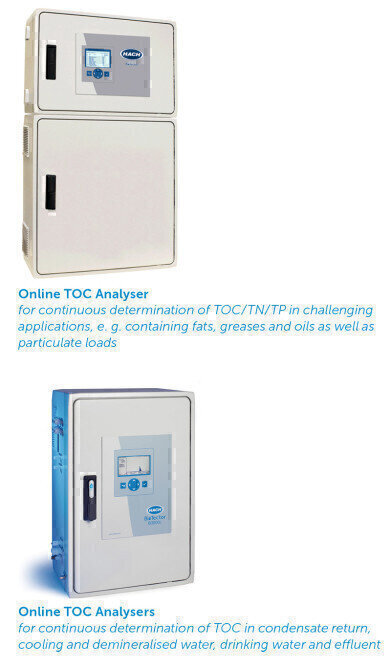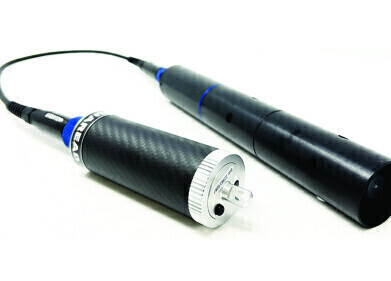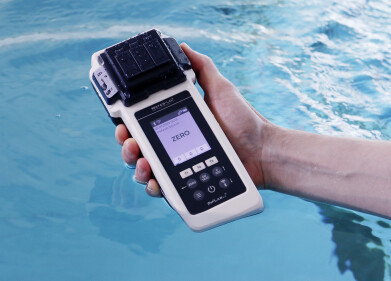Water/Wastewater
TOC – a revealing sum parameter
Oct 12 2016
Total Organic Carbon is an important sum parameter for assessing the organic load of water. In many applications TOC can act as an indicator for issues such as:
- Contamination of water sources or pipes
- Deposits in boiler/cooling systems
- Breakthrough in condensate return systems
- Product loss or CIP problems
- Strain for the wastewater treatment plant.
The Hach® LCK Cuvette Test System enables the TOC content of water and wastewater to be measured reliably and cost effectively in the laboratory. A major investment is not required, either financially or in terms of equipment.
If average numbers of samples have to be analysed, cuvette tests are the simplest and most cost-effective option. The chemicals and photometer are factory-calibrated and therefore ready for immediate use. Additionally the photometer can be used for multiple other parameters.
All methods of measuring TOC are based on the thermal or wet chemical oxidation of organic carbon to carbon dioxide (CO2). The carbon dioxide is detected and quantitatively determined. A distinction is made between two methods: the purging method and the difference method. The European standard EN 1484 refers to them both as equivalent reference methods. The choice of which method to use should be made on the basis of the composition of the sample
Hach LCK Cuvette Tests are available for both the difference and the purging method. The latter requires the inorganic carbon (TIC) to be removed from the sample before the digestion is carried out. The TOC-X5 shaker is used for this. The sample is pipetted into the digestion cuvette and the open cuvette is positioned in the shaker. The combination of shaker and fan drives the complete TIC out of up to eight samples within just five minutes. This saves time and is very easy and reliable from the point of view of handling.
A wet chemical oxidative digestion is carried out, followed by photometric determination of the liberated CO2. The CO2 passes from the digestion cuvette through a gas-permeable membrane and into the indicator cuvette. The resulting colour change in the indicator is evaluated with the photometer. A big advantage of this method is that even turbid, particle containing and coloured samples can be analysed without difficulty, as only the colour change in the indicator cuvette is measured.
The correct amounts of all reagents are already present in the digestion cuvette. Analysis accessories do not need to be rinsed with TOC-free water. The measuring ranges allow for the homogenised sample to usually be analysed immediately, without any need for time-consuming dilution, which is also a potential source of error.
For larger series of samples Hach offers the QBD1200 Laboratory Analyser, which is ideal for drinking water, semiconductor and power applications. Biotector Online Analysers handle the continuous determination of TOC in challenging applications, e. g. water containing fats, greases and oils as well as particulate loads, condensate return, cooling and demineralised water, drinking water or effluent.
Digital Edition
AET 28.4 Oct/Nov 2024
November 2024
Gas Detection - Go from lagging to leading: why investment in gas detection makes sense Air Monitoring - Swirl and vortex meters will aid green hydrogen production - Beyond the Stack: Emi...
View all digital editions
Events
Dec 02 2024 London, UK
Dec 03 2024 Dusseldorf, Germany
Dec 11 2024 Shanghai, China
Jan 12 2025 Abu Dhabi, UAE
Jan 14 2025 Abu Dhabi, UAE















.jpg)





